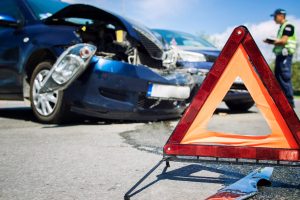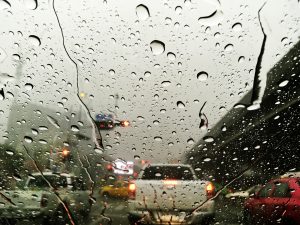Vehicle breakdowns happen without warning, leaving drivers stranded and stressed in the worst possible moments. Research shows that the average driver experiences a breakdown every seven years, but most people have no plan for handling these emergencies effectively.
Having a comprehensive car emergency plan becomes especially crucial for Virginia Beach drivers who navigate unique challenges like beach access roads, heavy tourist traffic, and unpredictable coastal weather. A well-prepared emergency response strategy can transform a potentially dangerous situation into a manageable inconvenience.
This guide covers everything you need to create an effective emergency plan, from pre-breakdown preparation to post-incident recovery. You’ll learn how to build a strategy that keeps you safe, reduces stress, and ensures quick resolution when vehicle emergencies strike.
When emergencies happen, Green Light Towing Service provides reliable assistance throughout Virginia Beach. Contact us at 757-938-3378 for professional help when your emergency plan requires expert support.
Why Virginia Beach Drivers Need Comprehensive Emergency Plans
Virginia Beach presents unique driving challenges that make emergency planning essential. The combination of interstate highways, beach access roads, and seasonal tourist congestion creates situations where help might not be immediately available.
Tourist traffic during peak seasons can delay emergency response times and create additional hazards for stranded motorists. Popular beach destinations often lack nearby service stations or safe waiting areas, making advance planning crucial for driver safety.
Coastal weather patterns bring sudden storms, flooding, and high winds that can disable vehicles without warning. These conditions require specific emergency protocols that differ from standard breakdown procedures.
The area’s geography includes remote beach access points, bridge spans, and tunnel approaches where cell phone service may be limited. Emergency plans must account for communication challenges in these locations.
Interstate corridors like I-64 and I-264 carry high-speed traffic that makes roadside breakdowns particularly dangerous. Having a clear emergency plan reduces the time spent in vulnerable positions along busy highways.
Creating Your Car Emergency Plan Virginia Beach Strategy
Effective emergency planning begins before you ever need help. Start by assembling essential emergency supplies that address common breakdown scenarios and safety concerns.
Your vehicle emergency kit should include basic tools, safety equipment, and communication devices. Keep jumper cables, tire pressure gauge, multi-tool, flashlight, and reflective triangles easily accessible in your trunk or cargo area.
Emergency contact information requires both digital and physical backup systems. Store important numbers in your phone with backup copies written on paper stored in your glove compartment or wallet.
Research and identify reliable emergency service providers before you need them. Investigate their coverage areas, response times, and customer reviews to make informed decisions during stressful situations.
Understanding your insurance coverage prevents confusion during emergencies. Review your policy to know what roadside assistance benefits are included and what documentation might be required for claims.
Create communication protocols with family members or colleagues who should be notified during emergencies. Establish check-in procedures and backup contacts who can assist with coordination if needed.
During Emergency Situations: Your Response Protocol
Safety becomes your top priority when breakdowns occur. Move your vehicle as far from traffic as possible, activate hazard lights immediately, and assess your surroundings for additional dangers.
Effective communication with emergency services requires specific information about your location, vehicle condition, and immediate safety concerns. Practice describing your situation clearly and concisely before emergencies happen.
What information should you gather for emergency services? Note your exact location using landmarks or mile markers, describe your vehicle’s problem symptoms, and inform them about any immediate safety hazards like nearby traffic or weather conditions.
Position yourself safely while waiting for assistance. Stay inside your vehicle if traffic poses risks, or move to a safe distance away from both your car and passing traffic if conditions allow.
Manage stress by focusing on tasks within your control. Use your emergency plan checklist, contact necessary people, and avoid making decisions based on panic or frustration.
Document the situation with photos and notes for insurance purposes. Record the time, location, weather conditions, and circumstances that led to your breakdown.
Essential Emergency Kit Components
Physical tools address common mechanical problems that might not require professional assistance:
• Jumper cables for dead battery situations
• Tire pressure gauge and portable air compressor
• Basic tool set including screwdrivers and adjustable wrench
• Emergency tire repair kit for minor punctures
• Tow rope or chain for short-distance vehicle movement
Safety equipment protects you during roadside emergencies:
• Reflective warning triangles to alert approaching traffic
• High-visibility safety vest for roadside visibility
• Flashlight with extra batteries for nighttime situations
• First aid kit for minor injuries during breakdowns
• Emergency blankets for cold weather protection
Communication and comfort items support extended wait times:
• Portable phone charger or power bank
• Emergency cash for unexpected expenses
• Water and non-perishable snacks
• Emergency contact information list
• Paper and pen for documentation
Technology Integration in Your Emergency Plan
Modern technology enhances emergency planning but should supplement rather than replace basic preparedness. Smartphone apps can help with location sharing, emergency contacts, and communication with service providers.
GPS location sharing allows family members or emergency services to find you quickly, even in unfamiliar areas. Set up these features before emergencies occur to ensure they work when needed.
Battery preservation becomes critical during extended emergencies. Learn to use your phone’s emergency mode and carry portable charging devices to maintain communication capabilities.
Weather monitoring apps help you anticipate conditions that might affect travel plans or emergency response times. Check forecasts before long trips and adjust travel schedules when severe weather threatens.
Vehicle diagnostic apps can help identify problems and communicate specific information to emergency services. Basic automotive knowledge combined with diagnostic tools improves emergency communication effectiveness.
Special Virginia Beach Emergency Considerations
Beach access roads present unique challenges for emergency planning. These areas often have limited cell coverage, infrequent traffic, and difficult access for emergency vehicles.
Bridge and tunnel breakdowns require specific protocols because stopping is prohibited in these locations. Know the procedures for your regular routes and identify safe areas beyond these structures.
Military base proximity affects emergency response procedures in some Virginia Beach areas. Understand any special considerations or restricted access that might impact emergency services.
Tourist season traffic significantly impacts emergency response times during peak visitation periods. Plan extra time for assistance arrival and consider alternative routes during busy seasons.
Hurricane season requires modified emergency plans that account for severe weather conditions, flooding, and potential evacuation scenarios. Update your emergency kit and communication plans for storm season.
Post-Emergency Recovery and Learning
Emergency experiences provide valuable learning opportunities for improving future preparedness. Review what worked well and identify areas where your plan could be enhanced.
Insurance claim processes require proper documentation and timely reporting. Understand your insurer’s requirements and keep necessary paperwork organized for quick access.
Vehicle inspection after emergencies helps identify potential problems that might cause future breakdowns. Schedule professional evaluation even if your car seems to be running normally.
Update your emergency plan based on real-world experience. Modify contact lists, adjust supply inventories, and refine procedures based on what you learned during actual emergencies.
Preventive maintenance scheduling helps avoid future emergencies by addressing potential problems before they cause breakdowns. Use emergency experiences to motivate better vehicle care habits.
Building Confidence Through Preparation
A comprehensive car emergency plan Virginia Beach strategy reduces stress and improves outcomes when vehicle problems occur. Preparation transforms potentially dangerous situations into manageable challenges that you can handle confidently.
Regular plan reviews ensure your emergency strategy remains current and effective. Update contact information, refresh emergency supplies, and practice procedures to maintain readiness.
Remember that even the best emergency planning sometimes requires professional assistance. Having reliable service providers identified in advance makes these situations much more manageable.
For professional emergency assistance throughout Virginia Beach, contact Green Light Towing Service at 757-938-3378. We’re here to help when your emergency plan requires expert support, providing reliable service when you need us most.




